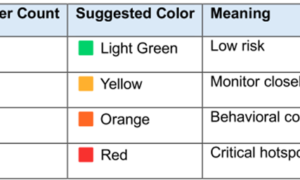Solar technology has come a long way in recent years, and the latest advancements are genuinely exciting. From more efficient solar cells to innovative solutions for storing renewable energy, there’s plenty happening in this field. The future of energy is shifting towards sustainable solutions, making solar technology advancements crucial for a greener planet.
Today’s solar panels are not only more efficient but also more affordable. This means you could potentially save more on your energy bills while reducing your carbon footprint. With these new developments, integrating solar power into everyday life has become easier than ever.
Additionally, the rise of smart solar grids is transforming how energy is managed and distributed. These systems help optimize energy usage and ensure that renewable energy is effectively harnessed. As you learn more about these innovations, consider how they can impact your own energy decisions.
Evolution of Solar Cells
Solar cell technology has transformed over the years, moving from traditional silicon-based models to modern alternatives like perovskite cells. These advancements reflect improvements in efficiency, cost-effectiveness, and versatility.
From Silicon to Perovskite Cells
When you think of solar panels, silicon likely comes to mind. Silicon solar cells have been around for a while and are known for their durability and decent efficiency. But they’ve got some limitations too, like high production costs and limited flexibility. That’s where perovskite cells come in.
Perovskite solar cells are gaining attention due to their potential for higher efficiency and lower production costs. They can be made with flexible materials, making them suitable for a variety of applications. The U.S. Department of Energy has been supporting research into these cells, aiming to bring the best of both worlds from silicon and perovskite technologies. While there are still challenges, particularly with stability and environmental concerns, perovskites are paving the way for the next generation of solar panels.
Breakthroughs in Photovoltaic Technology
You’ve probably noticed that solar panels are becoming more common, and for good reason. Recent breakthroughs are boosting solar efficiency, making panels more effective at capturing sunlight. One key area is tandem solar cells, which layer different materials to capture more sunlight across the spectrum. This can lead to significantly higher efficiencies than traditional cells.
Another focus is on improving the lifespan and stability of perovskite solar cells. Advances in protective coatings and material engineering are mitigating long-term degradation issues. With government and private sector investments, especially from the likes of the U.S. Department of Energy, these innovations are set to make solar energy more accessible and sustainable globally.
Enhancing Performance and Stability
In the world of solar technology, boosting both performance and longevity is key. You’ll find an exciting focus on new cell designs and material innovations leading the charge.
Tandem Solar Cells
Tandem solar cells are leading the pack in efficiency gains. By stacking multiple layers, these cells capture a broader spectrum of sunlight. Perovskite tandem solar cells are particularly promising. They can potentially exceed conventional silicon cells in efficiency. Oxford PV is making waves by pushing these limits further.
The layer-by-layer approach allows for capturing different wavelengths. This design minimizes energy loss and improves power conversion efficiency. It’s about getting more from every ray of sunlight hitting your roof, ultimately leading to a more effective solar setup.
Advancements in Material Durability
Durability is crucial for solar investments. New materials are helping best solar panels withstand environmental wear and tear. Innovations like protective coatings and enhanced backing materials ensure longer-lasting solar panels.
Stability is improved with advanced materials that resist moisture and heat. By addressing these vulnerabilities, you’ll see solar installations that maintain high performance over time. This has significant implications for reducing maintenance costs and maximizing energy production over the lifespan of your solar array.
Scaling for Commercialization and Deployment
Advancing solar technology isn’t just about innovation; it’s about making it feasible for widespread use. Successful commercialization hinges on transitioning to large-scale manufacturing and overcoming challenges in deployment to meet renewable energy needs.
Transition to Large-Scale Manufacturing
When it comes to expanding solar energy use, large-scale manufacturing is essential. You’re looking at a shift from small labs to big factories. Automation and efficient production processes help bring costs down.
Incorporating automated systems minimizes mistakes and increases output. Large factories equipped with robotic assembly lines can dramatically cut production time. Standardized components are key in reducing complexity and speeding up the assembly of solar panels.
Scaling up manufacturing also means ensuring materials are sustainably sourced. Recycling programs for rare materials can lessen environmental impact, aligning efforts with climate change goals. As demand grows, maintaining quality while expanding capabilities remains critical.
Challenges in Solar Energy Deployment
Deploying solar energy on a large scale involves hurdles like site selection and grid integration. You need suitable locations with consistent sunlight, but land use conflicts can pose challenges. Balancing human and environmental priorities is essential.
Grid compatibility is another biggie. Upgrading existing infrastructure to handle new solar installations requires investment and expertise. Battery storage systems play a pivotal role in balancing supply and demand when the sun isn’t shining.
Local regulations can slow the deployment process. Navigating permits, zoning laws, and environmental assessments takes time and resources. Community engagement can foster support and streamline approvals.
Final Thoughts
In the world of solar technology, there’s always something new popping up. You’re probably excited about how these advancements can change the way you think about energy. The future of solar tech seems promising, doesn’t it?
Think about flexible solar panels. They could transform your windows or even your clothing into energy sources. Isn’t it fascinating to imagine your jacket charging your phone?
Take a look at perovskite solar cells. They’re a hot topic right now because they’re potentially more efficient and cheaper than traditional panels. Plus, researchers are making strides toward improving their stability and lifespan.
Incorporating solar tiles into home designs could become the latest trend. A sleek design that blends with construction without compromising on looks allows you to harness the power of the sun while keeping aesthetics in check.
Here’s a quick list of benefits for you:
- Renewable Energy Source: Helps reduce carbon footprint.
- Cost Savings: Reduces electricity bills.
- Low Maintenance: Generally requires little upkeep.
You might be curious about the costs, right? It can be an investment upfront, but tax incentives and the long-term savings potential make it appealing. So, as newer technologies emerge, your energy choices might soon look very different.



































